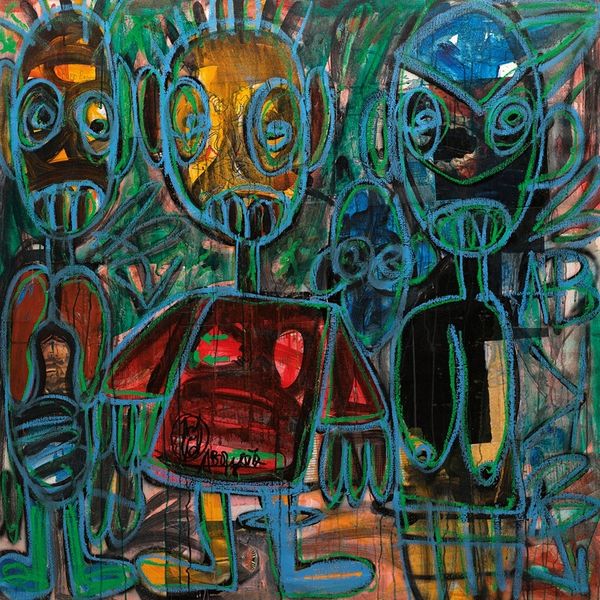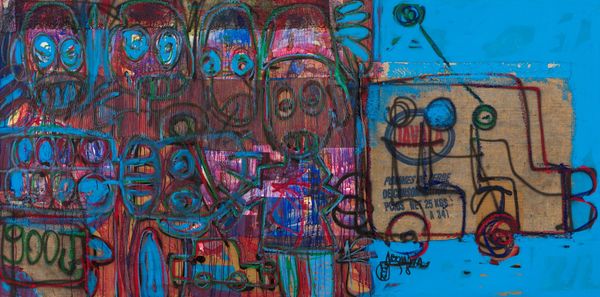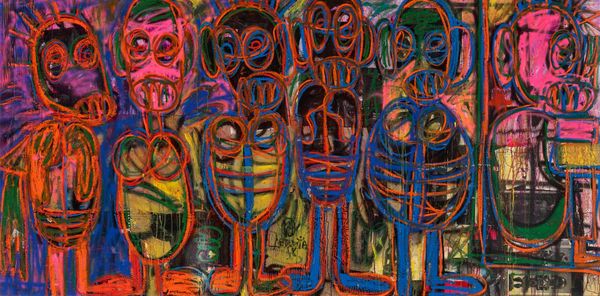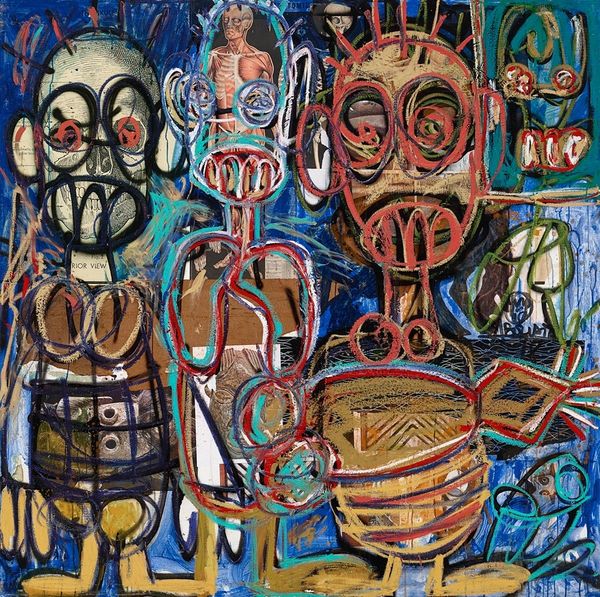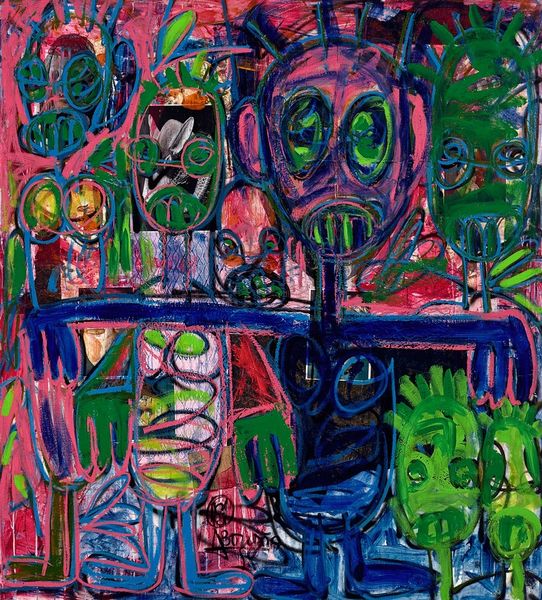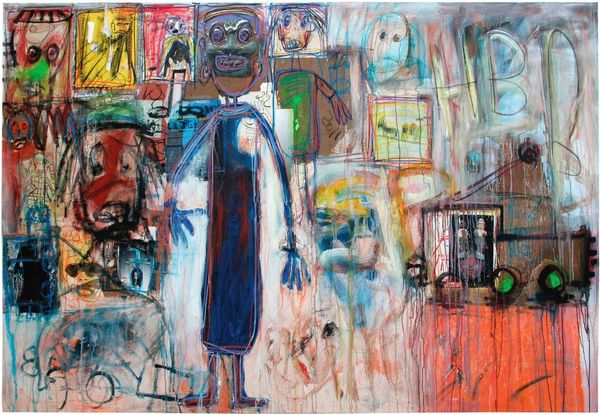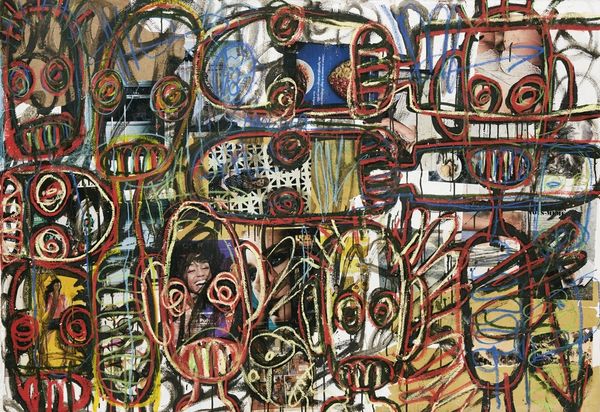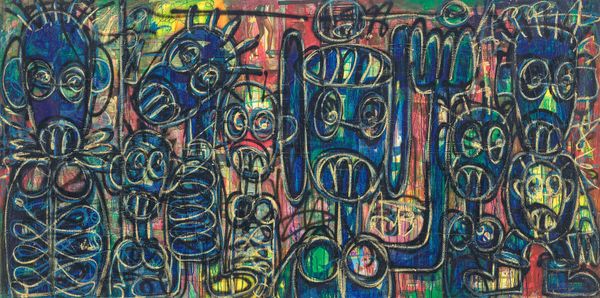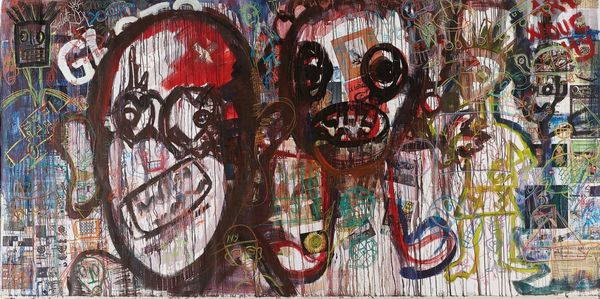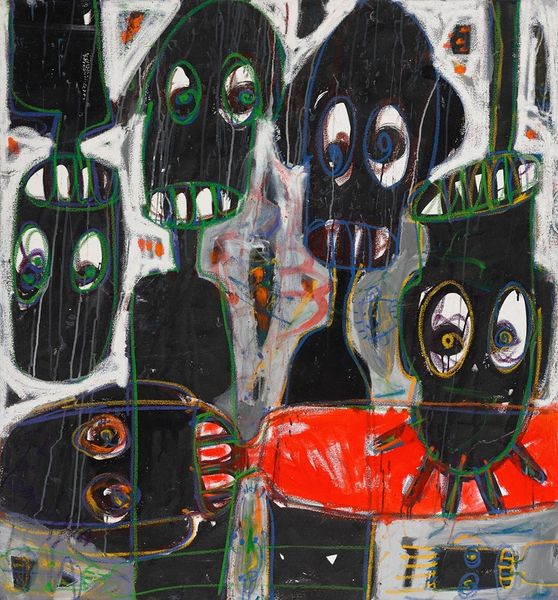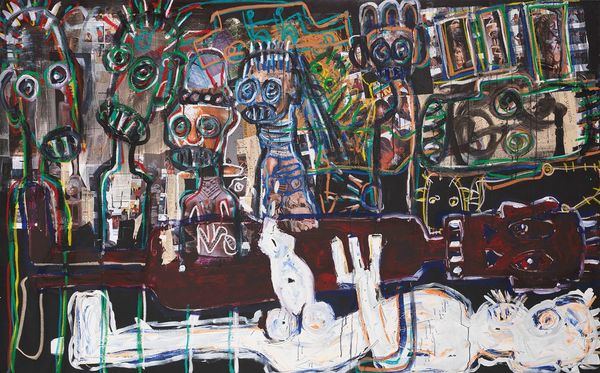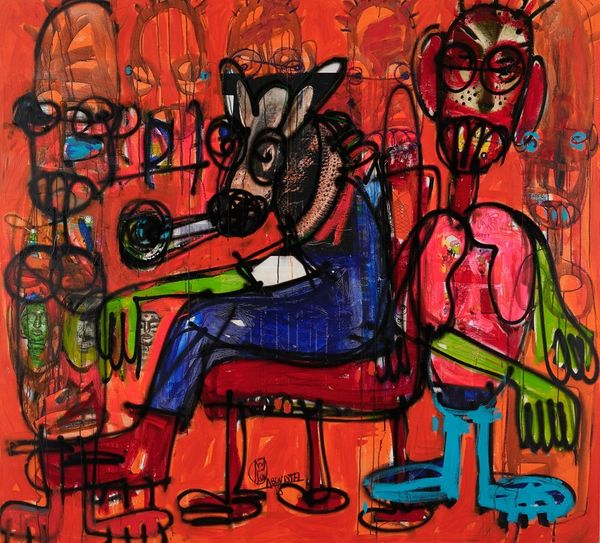
Copyright: Modern Artists: Artvee
Editor: We’re looking at "Djoly du Mogoba" by Aboudia, created in 2011 using mixed media and acrylic paint. The figures are raw, almost childlike, and yet there's something quite unsettling about their depiction, particularly with the military imagery. What do you see in this piece from a historical perspective? Curator: What strikes me immediately is the power of Aboudia's visual language to engage with the socio-political landscape of his native Ivory Coast. The seeming naivete of the figures clashes with the obvious reality of conflict, inviting a deeper consideration of the experiences of children in war. The street art style reflects a conscious choice to utilize public visual language to convey difficult truths, almost as a form of protest against established artistic conventions and potentially the political forces responsible for societal trauma. Do you notice how the written text on the canvas blends into the visual texture? Editor: Yes, the scrawled writing does become part of the overall composition, but I'm curious, what kind of statements do you think it is trying to make about institutions when using public imagery? Curator: Think about where street art and graffiti usually exist – public spaces, often in opposition to authority, offering a counter-narrative to the official story. By embracing that aesthetic and combining it with childlike imagery, Aboudia effectively democratizes the narrative of conflict. The expressionistic style, combined with the figures resembling graffiti, creates an immediate and raw emotional connection to very personal accounts. Do you think his choices challenge or subvert traditional depictions of war in art? Editor: Definitely! Traditional war art often leans towards glorification or grand narratives, but this seems to show a very raw reality, as though experienced by a child. Curator: Exactly. And in doing so, it implicates us, the viewers, in this uncomfortable reality. Art in this mode becomes less about aesthetics and more about a crucial act of witnessing. The layering of media – paint, text, potentially found objects – further emphasizes the density and complexity of lived experience, transforming the canvas into a visual palimpsest of trauma. Editor: That is incredibly insightful. I hadn’t considered the canvas itself as a representation of layered experiences and societal memory. Curator: It is the piece’s most powerful aspect. By understanding Aboudia’s position within a historical and socio-political context, we can better appreciate the complex ways in which artists engage with difficult realities, and what purpose their role plays in challenging the norm. Editor: This was incredibly helpful; I feel I understand Aboudia's intentions a lot better.
Comments
No comments
Be the first to comment and join the conversation on the ultimate creative platform.
